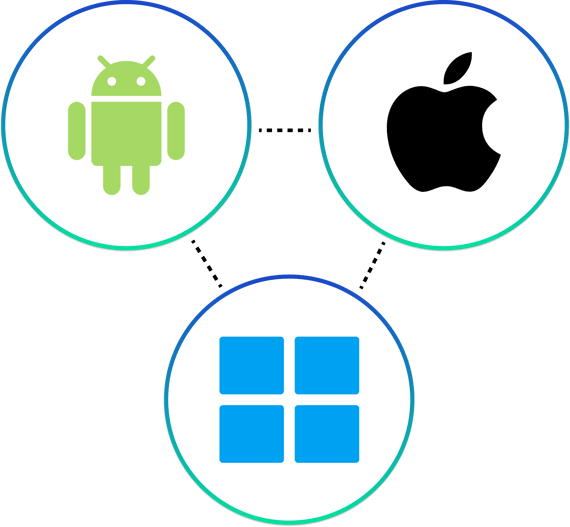Cross-Platform Photo Management: Tips for a Seamless Experience

These days, managing and sharing photos has become an integral part of our lives. Whether it's capturing everyday moments, chronicling travels, or sharing snapshots with friends and family, the need for efficient photo management is undeniable. This necessity is further amplified by the diverse ecosystem of devices we use, from iOS and Android smartphones to macOS and Windows PCs. The challenge, however, lies in creating a seamless photo-sharing experience across these platforms. In this comprehensive guide, we'll explore effective strategies for cross-platform photo management, focusing on iOS, macOS, and Android photo sharing, and reveal how Photobucket can streamline this process.
Understanding the Landscape
Before diving into solutions, it's essential to understand the challenges of cross-platform photo management. Each operating system—iOS, macOS, and Android—has its own set of tools and services for photo storage and sharing. While these tools are effective within their respective ecosystems, cross-platform sharing often involves juggling multiple apps and dealing with incompatible formats or resolutions. This fragmentation can make photo management a lot more cumbersome than it needs to be.
Establishing a Centralized Hub

The first step towards seamless photo management is creating a centralized hub where all your photos can be stored, regardless of the device used to capture or view them. This is where cloud-based services like Photobucket come into play. By offering a cross-platform solution, Photobucket allows users to upload photos from iOS, macOS, Android, and even Windows devices into a single, accessible location.
Streamlining iOS and macOS Photo Sharing
For iOS and macOS users, the synergy between devices offers a good starting point for photo sharing. However, integrating a service like Photobucket can enhance this experience by providing additional features such as secure sharing options, a compression-free guarantee and substantial cloud storage space. By uploading your photos to Photobucket, you can ensure that they're not only backed up safely but also easily shareable with users on other platforms, including Android.
Enhancing Android Photo Sharing
Android users often benefit from the open nature of the ecosystem, which allows for a wide range of apps and services for photo management. However, this openness can also lead to confusion and a lack of consistency in how photos are managed and shared. By using Photobucket, Android users can streamline their photo management process. The platform offers an intuitive interface for uploading and organizing photos, making it easier to share them across different devices, including those running iOS or macOS.
Leveraging Photobucket's Features

Photobucket isn't just a storage solution; it's a comprehensive photo management platform that offers several features to enhance your photo-sharing experience:
-
Cross-Platform Compatibility: Photobucket works seamlessly across iOS, macOS, Android, and Windows, ensuring that your photos are accessible no matter which device you're using. And with its new Group Buckets plan, one simple link is all you need to share your photos and videos with your group.
-
Compression-Free Guarantee: Photobucket guarantees that the quality of what you upload and download will never change and they don't charge extra to not compress your photos, which is not the case with other cloud storage services.
-
Secure Sharing: Privacy and security are paramount when sharing photos. Photobucket provides secure sharing options, including the ability to control who can view your photos.
-
Generous Storage Options: With various subscription plans, Photobucket offers one whole terabyte of cloud storage space, which is enough for 500,000 photos (based on 2MB per photo), ensuring that you have enough room for all your photos without worrying about device storage limits.
Tips for a Seamless Experience
To make the most of cross-platform photo management, consider the following tips:
-
Consolidate Regularly: Make it a habit to regularly upload your photos to Photobucket. This not only ensures that they're backed up but also makes them readily available across all your devices. You can also use the Auto Backup feature in Photobucket's mobile app so that your memories are backed up as soon as you create them.
-
Organize Thoughtfully: Use albums and tags to organize your photos within Photobucket. A well-organized photo library is easier to navigate and share.
-
Explore Sharing Options: Depending on your needs, Photobucket offers different ways to share your photos, from direct links to embedded codes for websites. Explore these options to find what works best for you.
-
Stay Informed: Keep an eye on updates and new features from Photobucket. The platform is continually evolving, with new tools and options that can enhance your photo management experience.
Final Thoughts
Cross-platform photo management doesn't have to be a daunting task. By leveraging cloud-based solutions like Photobucket, you can create a seamless, efficient, and enjoyable photo-sharing experience across iOS, macOS, and Android devices. With the right strategies and tools, managing your digital memories can be as joyful as making them. Check out Photobucket today!
